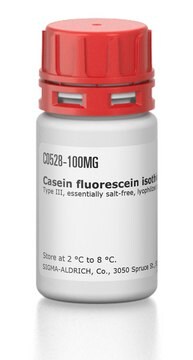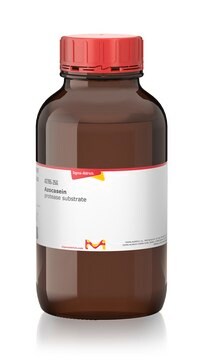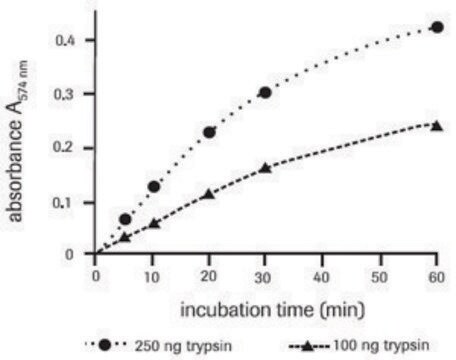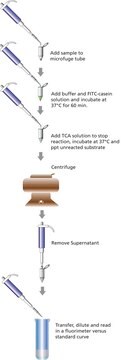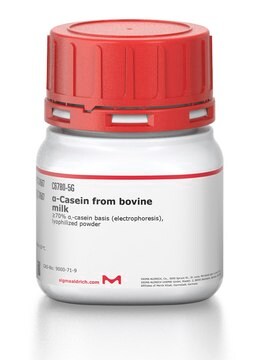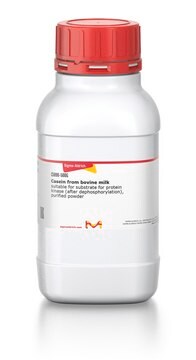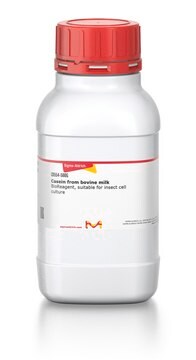C3777
Casein fluorescein isothiocyanate from bovine milk
Type II, essentially salt-free, lyophilized powder
Sinónimos:
FITC-casein
About This Item
Productos recomendados
type
Type II
Quality Level
form
essentially salt-free, lyophilized powder
extent of labeling
20-50 μg FITC per mg solid
solubility
water: 5 mg/mL, clear to hazy, yellow to orange
storage temp.
2-8°C
¿Está buscando productos similares? Visita Guía de comparación de productos
General description
Application
- as a substrate for semi-quantitative analysis of protease in Arabidopsis cells
- to determine the caseinolytic activity of secreted LasB (elastase), alkaline protease and protease IV
- for determining the SpeB (cysteine protease) proteolytic activity in Streptococcus pyogenes cells
Biochem/physiol Actions
Storage Class
11 - Combustible Solids
wgk_germany
WGK 3
flash_point_f
Not applicable
flash_point_c
Not applicable
ppe
Eyeshields, Gloves, type N95 (US)
Certificados de análisis (COA)
Busque Certificados de análisis (COA) introduciendo el número de lote del producto. Los números de lote se encuentran en la etiqueta del producto después de las palabras «Lot» o «Batch»
¿Ya tiene este producto?
Encuentre la documentación para los productos que ha comprado recientemente en la Biblioteca de documentos.
Los clientes también vieron
Protocolos
Our General Protease Assay Procedures and Substrates overview.
Nuestro equipo de científicos tiene experiencia en todas las áreas de investigación: Ciencias de la vida, Ciencia de los materiales, Síntesis química, Cromatografía, Analítica y muchas otras.
Póngase en contacto con el Servicio técnico